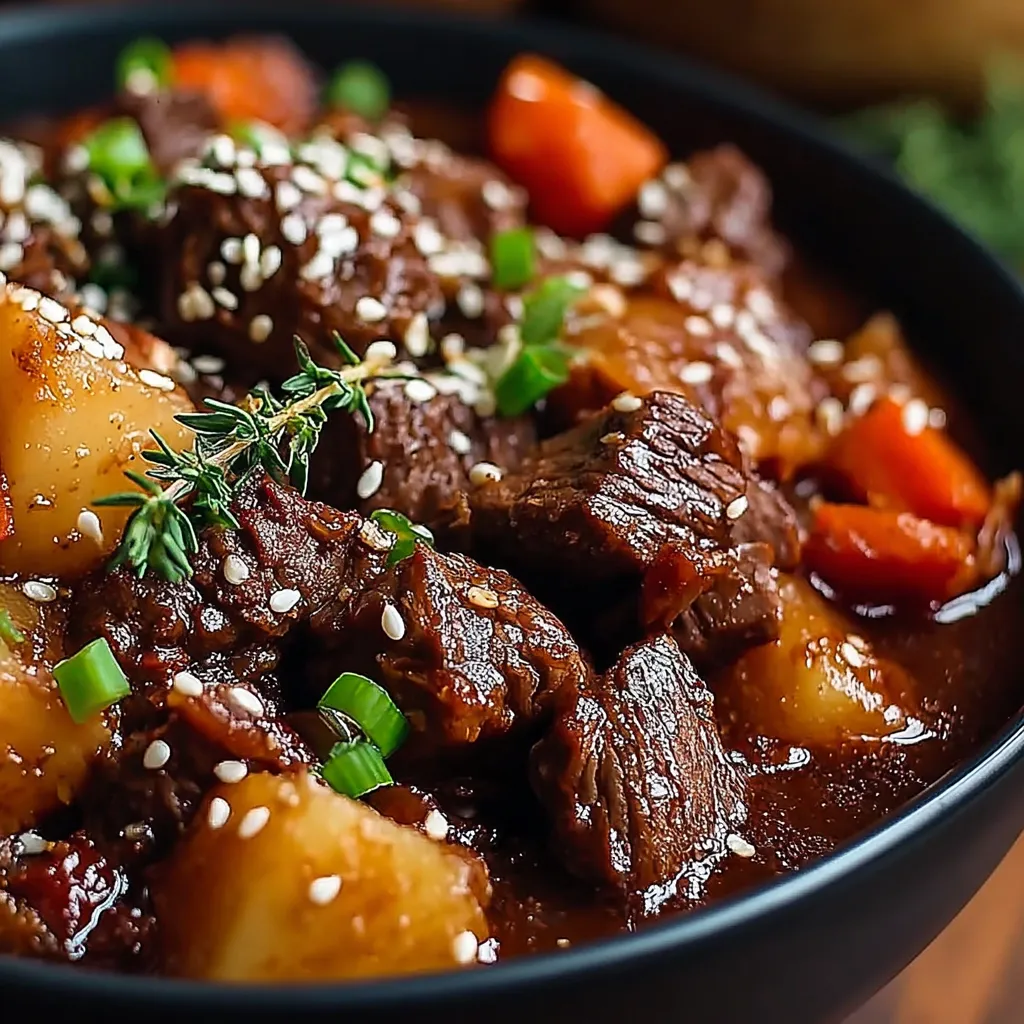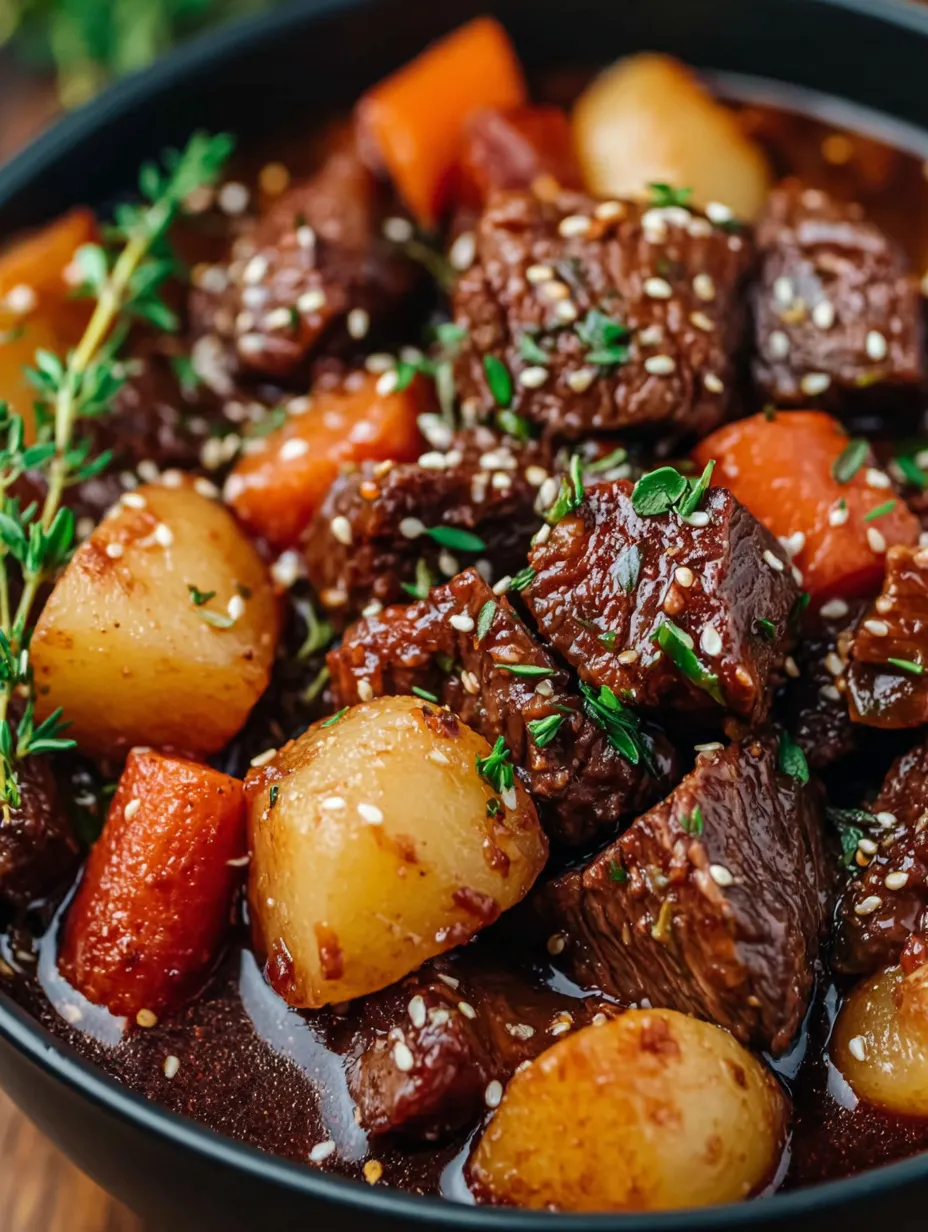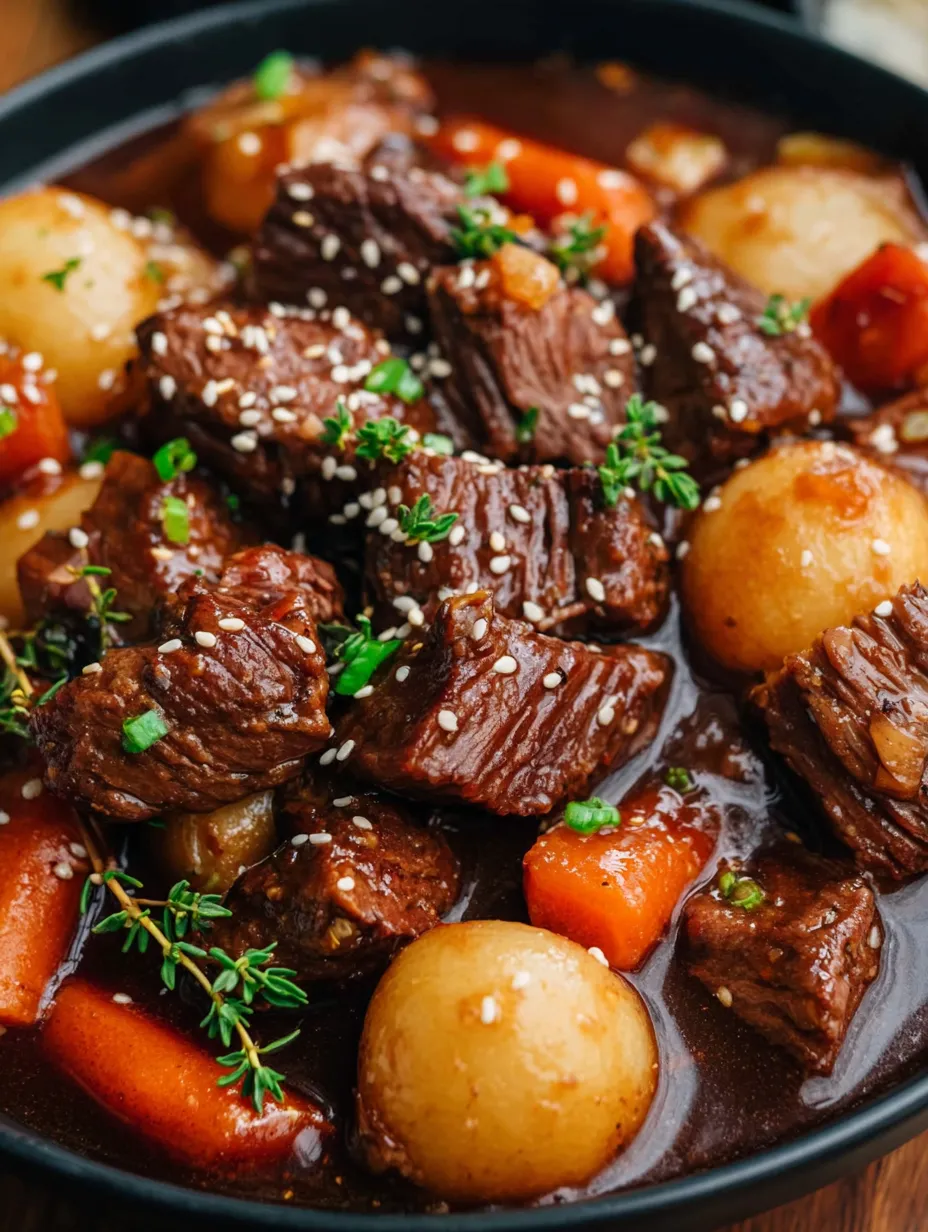 Save
Save
Korean Style Pot Roast brings together the soul-warming appeal of classic pot roast with the punchy taste of Korean cooking. Melt-in-your-mouth beef simmers in a body of savory sweet spicy sauce and tender vegetables. This dish truly shines at a family weekend dinner or a special celebration with friends.
I first tried blending Korean flavors with pot roast after a trip to Seoul and now this dish gets requested whenever my family gathers for a cozy meal.
Ingredients
- Chuck roast: Look for one with good marbling for deep flavor during slow cooking
- Salt and black pepper: These basic seasonings help bring out the beef’s flavor as it sears
- Soy sauce: The base of your savory sauce Choose naturally brewed for richness
- Gochujang: Korean chili paste essential for sweet heat Try to find authentic brands in Korean markets
- Sesame oil: Adds nuttiness Toasted sesame oil is best for aroma
- Garlic: Adds pungency and depth Freshly minced gives the best flavor
- Ginger: Brings subtle warmth and fragrance Use young ginger for less fibrous texture
- Honey or brown sugar: Balances the salt and spice Go with honey for floral sweetness
- Korean pear or apple: Gives natural sweetness and keeps the beef tender Korean pear is juicy and crisp
- Rice vinegar: Adds brightness Use unseasoned vinegar for clean acidity
- Carrots and potatoes: These soak up the bold flavors and add texture Choose firm varieties so they hold shape
- Onion: Sweetens and rounds out the sauce Yellow or white onion both work well
- Korean radish: Optional for earthiness and crunch Peel well and slice evenly
- Green onions: For garnish A pop of color and freshness
- Sesame seeds: Toasted for crunch and visual appeal Pick high-quality seeds for best taste
Step-by-Step Instructions
- Prepare the Beef:
- Pat chuck roast dry with paper towels to remove moisture for better searing. Season generously with salt and pepper on all sides. Heat sesame oil in a large skillet over medium-high until shimmering then sear the beef for several minutes per side until each area develops a dark brown crust. This step builds deep flavor for the finished roast.
- Make the Sauce:
- Combine soy sauce gochujang sesame oil minced garlic grated ginger honey or brown sugar grated Korean pear or apple and rice vinegar in a medium bowl. Whisk vigorously until the mixture becomes smooth and homogenous. This sauce acts as the marinade and braising liquid infusing the beef with bold and balanced flavors.
- Assemble and Cook:
- Place the seared beef in a slow cooker Dutch oven or heavy pot. Pour the prepared sauce over the meat ensuring all surfaces are coated. Nestle carrots potatoes onion and Korean radish if using evenly around the beef. For slow cooker set to low and cook for about 8 hours or on high for 4 to 5 hours. For stovetop keep at a gentle simmer with the lid on for 3 to 4 hours occasionally checking that the liquid never runs dry and basting as needed.
- Serve:
- Carefully transfer the beef to a serving platter then arrange the cooked vegetables surrounding it. Generously spoon sauce from the pot over the top of the beef and vegetables. Garnish the finished dish with sliced green onions and sesame seeds right before serving for added color and a burst of freshness.

I always look forward to adding Korean pear to the mix because it not only brings a sweet note but also makes the beef irresistibly tender. My kids have turned helping grate the pear into a little tradition for every holiday dinner.
Storage Tips
This pot roast keeps beautifully in the fridge for up to three days in an airtight container. The flavors deepen with time making leftovers even tastier. For freezing slice the beef and pack with sauce and vegetables in freezer-friendly containers for up to two months. Defrost overnight in the fridge and reheat gently on the stove with a splash of water to loosen the sauce.
Ingredient Substitutions
If you cannot find Korean pear a sweet apple like Fuji is an excellent replacement that still brings juiciness. For a milder sauce use less gochujang or substitute in a bit of ketchup. You can use sweet potatoes instead of regular potatoes for a touch of earthiness. Gluten-free soy sauce works perfectly if needed.
Serving Suggestions
Serve this pot roast sliced thick with a big spoonful of sauce on a bed of steamed white rice or fluffy mashed potatoes. Kimchi on the side adds crunch and extra tang while a sprinkle of extra sesame seeds makes each serving special. For gatherings set out lettuce leaves for wrapping beef and veggies Korean barbecue style.

Cultural Context
This dish takes its inspiration from Korean galbijjim and classic Western pot roast. In Korean cuisine soy-based braises are popular for holidays and family feasts. This cross-cultural mashup keeps the heart of comfort food while inviting new flavors to the table. Sharing a pot of slow-cooked beef with loved ones is always a centerpiece at memorable meals in my home.
Recipe FAQs
- → What cut of beef works best?
Chuck roast is ideal because its marbling keeps the beef juicy and tender during long, slow cooking methods.
- → Can gochujang be substituted?
If gochujang isn't available, blend chili paste with a bit of miso and sugar to mimic the sweet-spicy flavor profile.
- → Why use grated pear in the sauce?
Grated Korean pear (or apple) adds natural sweetness and helps tenderize the beef, enhancing both flavor and texture.
- → Is a slow cooker necessary?
No, a Dutch oven or heavy pot on the stovetop can achieve similar results with low, gentle simmering.
- → What vegetables pair well in this dish?
Carrots, potatoes, onions, and Korean radish are traditional, but you can include other root vegetables to suit your taste.
